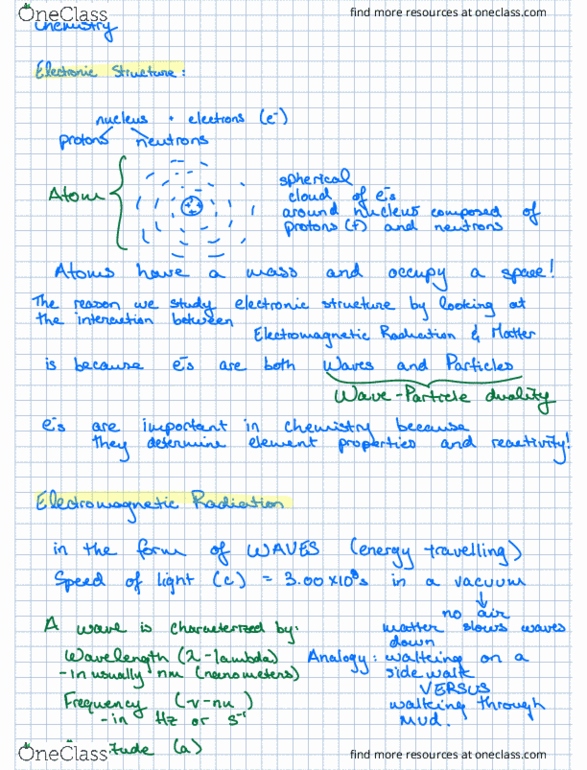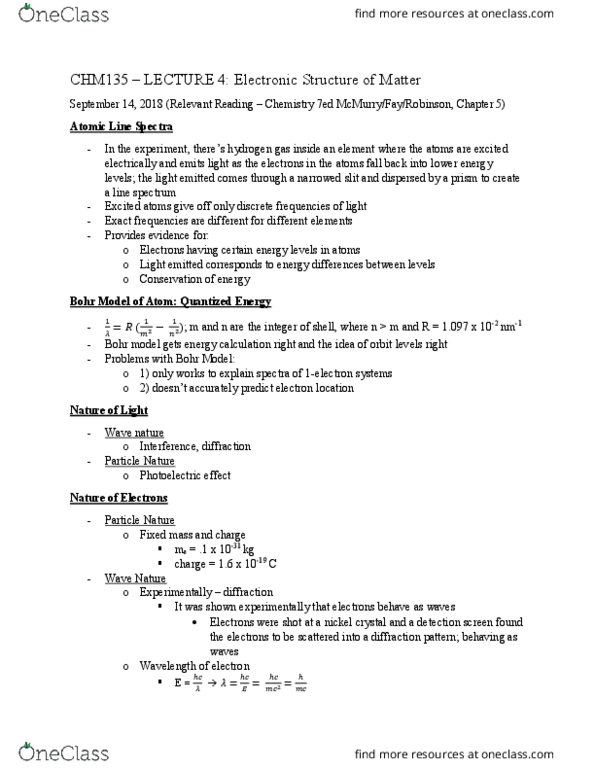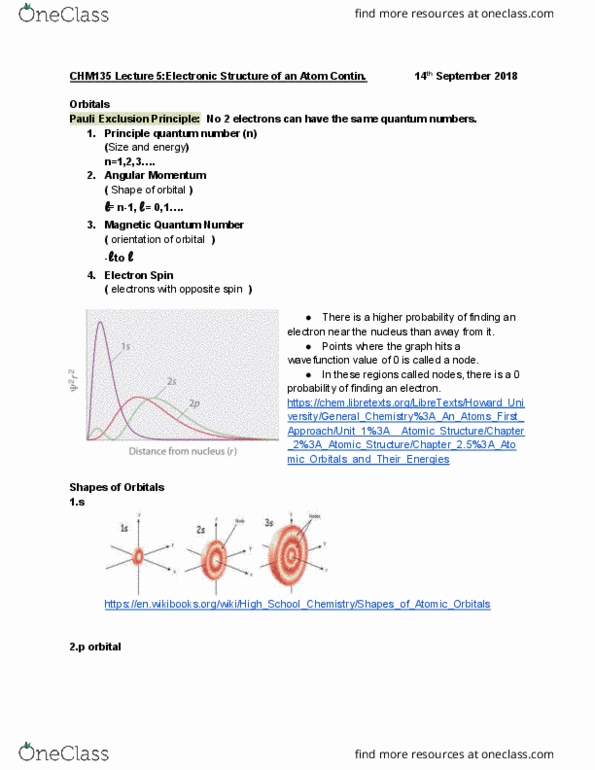CHM135H1 Lecture Notes - Lecture 4: Bohr Model, Photon, Magnetic Quantum Number
CHM135H1 verified notes
4/38View all
Document Summary
Chm135 lecture 4: electronic structure of matter. September 14, 2018 (relevant reading chemistry 7ed mcmurry/fay/robinson, chapter 5) Excited atoms give off only discrete frequencies of light. Exact frequencies are different for different elements. Provides evidence for: electrons having certain energy levels in atoms, light emitted corresponds to energy differences between levels, conservation of energy. 1= (cid:4666)1(cid:3040)2 1(cid:3041)2(cid:4667); m and n are the integer of shell, where n > m and r = 1. 097 x 10-2 nm-1. Bohr model gets energy calculation right and the idea of orbit levels right. Problems with bohr model: 1) only works to explain spectra of 1-electron systems, 2) doesn"t accurately predict electron location. Particle nature: fixed mass and charge, me = . 1 x 10-31 kg, charge = 1. 6 x 10-19 c. Position and momentum of a particle cannot be known exactly at the same time (cid:4666) (cid:4667)(cid:4666) (cid:4667) 4: (cid:4666) (cid:4667) uncertainty in position ( ) uncertainty in momentum.




